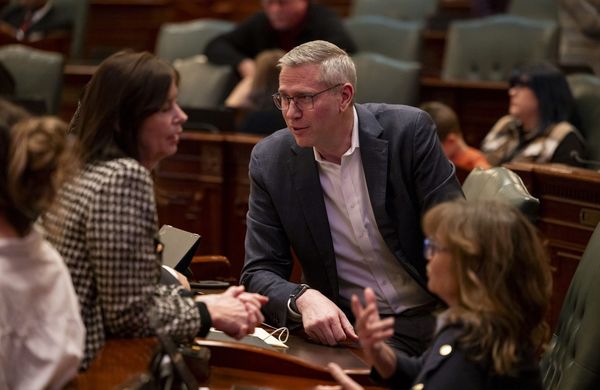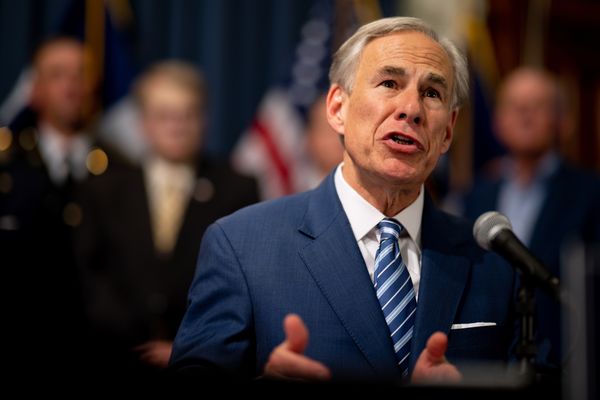
If we end up in a recession, will the benefits be worth the cost? That is perhaps the grandest, gravest question facing the American economy as it barrels toward what feels like an almost inevitable downturn. More companies are announcing layoffs. Hiring is slowing. Home prices are falling. Forecasters put the odds of a full-on contraction in the next year at 60 to 96 percent, with one statistical model spitting out a probability of 100 percent.
This coming recession, if it does come, will largely be an artifact of policy, with a handful of unelected bureaucrats based in Washington choosing to increase unemployment and bankrupt businesses in order to cool off the country’s high inflation rates. To get the price of milk and gas under control for everyone, the argument goes, some people might need to lose their jobs.
“We’re never going to say that there are too many people working, but the real point is this: inflation. What we hear from people when we meet with them is that they really are suffering from inflation,” Jerome Powell, the chair of the Federal Reserve, said in September. “If we want to set ourselves up, really light the way to another period of a very strong labor market, we have got to get inflation behind us. I wish there were a painless way to do that. There isn’t.”
The question is how much pain the economy needs to bear and who will bear it. Indeed, the policy the Fed is pursuing—raising interest rates sharply and quickly—carries a high human cost even if it works precisely as theorized. And things working out as the Fed wants them to is not a given, what with the persistence of inflation and the number of variables in play.
Right now, the economy is running hot. The unemployment rate, after reaching 10 percent during the Great Recession and spiking to a high of 14.7 percent during COVID shutdowns, is now just 3.7 percent. Wages are rising; job openings far outnumber jobless workers. Yet as a partial consequence of that strong labor market, prices keep rising, eroding families’ purchasing power. Indeed, inflation is at its highest level since the 1980s. The price tag for a basket of groceries was 12 percent higher in October than it was a year before, gas prices hit their highest-ever nominal level this summer, and the ratio of home prices to median household income is at a historic high—higher even than before the housing bubble burst in 2006.
Lots of people have jobs, and lots of people are earning more money than in the past. This is one reason prices are increasing so quickly. It is not the only one. Households are still spending the cash they accumulated during the early phase of the pandemic, when Congress disbursed trillions of dollars of stimulus. And inflation is coming from not just elevated demand but also restricted supply. The country’s massive housing shortage is elevating shelter costs, the war in Ukraine continues to roil energy markets and drive up the cost of food, and COVID-related supply-chain problems persist.
Whatever the cause, inflation is hurting working-class families. “Lower- and middle-income households suffer the most in this high-inflation environment,” Mark Zandi, the chief economist at Moody’s Analytics, told me. “Inflation is particularly high for the things they spend their budgets on, and they don’t have a financial cushion to fall back on” in the same way that wealthy families do.
Depending on how the Fed weighs the risks, it could end up engineering one of five scenarios:
The do-nothing option: Given the hot labor market and rapid pace of inflation, the Fed could do nothing. It could quit raising interest rates. It could choose to tolerate rising prices, satisfied that workers are at the very least also benefiting from rising wages. And many progressives argue that the Fed should do nothing, or at least do less than it is doing now. The central bank cannot fix the price increases caused by supply bottlenecks, they argue. Why sacrifice the livelihoods of low-income workers by slowing the economy down if costs are going to go up anyway?
“Rate hikes won’t make Vladimir Putin turn his tanks around and leave Ukraine. Rate hikes won’t break up monopolies. Rate hikes won’t straighten out the supply chain,” Senator Elizabeth Warren of Massachusetts told Powell at a hearing this summer. “Rate increases make it more likely that companies will fire people and slash hours to shrink wage costs.”
But many economists, including those at the Federal Reserve, believe that rising prices are the result of strong demand, not just supply problems: The cost of everything but food and gas was rising at a 6.3 percent annual pace as of October, three times faster than the Fed’s target. In time, Zandi told me, the fear is that inflation will “undermine the underlying growth rate of the economy, and you really don’t want to go down that path.”
Untethered inflation: The Fed is not afraid of rising prices, per se. It is afraid of a long spell of high inflation that results in businesses hiking prices on consumers and workers insisting on wage increases to cover their costs, which in turn leads businesses to hike prices further and workers to insist on additional wage increases. (This is known as a wage-price spiral.) The agency is afraid of everyone expecting prices to keep going up and up and up, and acting like they will. “The really bad thing is permanently rising inflation,” Jason Furman, an economist at Harvard and the chair of Barack Obama’s Council of Economic Advisers, told me.
Such untrammeled inflation tends to lead to declining living standards for families, with rising wages failing to outpace rising costs. It prompts businesses to adapt in costly ways—by, for instance, buying goods now for delivery later. It forces investors to invest in inflation-proof parts of the economy rather than the most dynamic or promising parts. It is just stressful for households and companies to deal with, Zandi said. Plus, Furman noted, “you would need a bigger downturn to get rid of it.”
The soft landing: The wiser course would be to prevent a wage-price spiral, keep inflation expectations in check, and get price increases under control now, some economists think. The longer high rates of inflation persist, the more the Fed has to hike rates in the future and the greater the eventual toll—particularly on groups that typically experience high rates of joblessness. “If all you cared about was [minimizing] the Black unemployment rate, you would want to be aggressive” about fighting inflation now, Furman told me. If the Fed waits, he said, “the cost only goes up. If expected inflation goes up half a point, that could be an extra million or 2 million jobs.”
The Fed is hoping to raise borrowing costs enough that workers quit switching jobs, but not so much that businesses enact widespread layoffs. It wants to ease rents without destroying the home-building pipeline. It wants to slow down the economy without tipping it into a recession. But, as Powell has noted, even a soft landing comes with a fair amount of pain. Rising prices hurt everyone a bit. Unemployment hurts a small number of people in a devastating fashion, and the Fed sees the unemployment rate rising to 4.4 percent by the end of next year.
Stagflation: By hiking rates so much and so quickly—the Fed has raised short-term interest rates by 3.75 percentage points this year—it risks steering the economy not into a soft landing but into one of two more frightening scenarios.
If it triggers a recession without getting inflation under control, that would be something known as stagflation. It is a “central bank’s worst nightmare,” said Ryan Sweet, the chief U.S. economist at Oxford Economics. “You raise interest rates to bring down inflation and you push the economy deeper into a recession. Or you cut interest rates to pull the economy out of recession and that raises inflation.” Generally, Zandi added, central banks have no choice but to let the unemployment rate get high enough and the recession deep enough that the rate of inflation comes down, then let the economy recover from there. “That’s very ugly,” he said. “There’s just a lot of pain that comes with that.”
The hard landing: The Fed could simply overshoot and cause a recession. That would be less terrifying than a bout of stagflation, but it would still be an awful prospect. Recessions destroy good businesses. They dampen productivity and ingenuity. They put workers on permanently lower earnings trajectories. They damage people’s health. And they hit the worst-off families the hardest. “Black and brown workers would be the first to be fired,” says Lindsay Owens of the progressive think tank the Groundwork Collaborative. “The impact on the long-term unemployed, older workers, and disabled workers would be really severe.”
Such a recession might not be entirely the Fed’s fault, and not entirely the Fed’s to avoid. “The global economy is slowing down,” Sweet told me, pointing to data showing that the United Kingdom and the euro zone are slipping into a contraction, and that China is already in a “growth recession” because GDP is expanding too slowly to stop unemployment from rising. “This could be the first recession in recent memory where the rest of the world goes down and pulls the U.S. economy down with it.” The hope, at that point, would be that a recession would be mild and could be offset with smart fiscal policy, including investments in ending the supply constraints causing high inflation in the first place.
Indeed, the country needs the Fed to manage these interest-rate hikes judiciously. More than that, it needs policies to make the country less vulnerable to high prices in the future. Energy independence, housing abundance, and stronger supply chains would make the Fed’s job easier—and would help avoid ugly choices about who has to suffer and how much.







